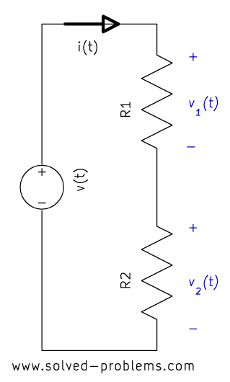Nodal Analysis eBook
Screenshots



All Articles in Electrical Circuits

Turning off a source, which is usually used in solving circuits with superposition method, means setting its value equal to zero. For a voltage source, setting the voltage equal to zero means that it produces zero voltage between its terminals. Therefore, the voltage source must insure that the voltage across two terminals is zero. Replacing the source with a short circuit can do that. Thus, voltage sources become a short circuit when turned off.
For a current source, setting the current equal to zero means that it produces zero current. Therefore, the current source must insure that no current flows through its branch. An open circuit can do that. Hence, to turn off a current source it should be replaced by an open circuit.
How about dependent sources? The voltage/current of a dependent source is dependent on other variables of the circuit. Therefore, dependent sources cannot be turned off.
Example I: Turn off sources one by one.

Solution:
I) The voltage source:




Reference Node
In circuits, we usually label a node as the reference node also called ground and define the other node voltages with respect to this point. The reference node has a potential of ![]() by definition. The following symbol is used to indicate the reference node:
by definition. The following symbol is used to indicate the reference node:

As mentioned, the selection of the reference node is arbitrary. However, a wise selection can make the solving easier. As a general rule, it is usually chosen to be
(more…)

The voltage division rule (voltage divider) is a simple rule which can be used in solving circuits to simplify the solution. Applying the voltage division rule can also solve simple circuits thoroughly. The statement of the rule is simple:
Voltage Division Rule: The voltage is divided between two series resistors in direct proportion to their resistance.
It is easy to prove this. In the following circuit

the Ohm’s law implies that
![]() (I)
(I)
![]() (II)
(II)
(more…)

1) Ideal Independent Voltage Sources
An ideal independent voltage source is a two-terminal circuit element where the voltage across it
a) is independent of the current through it
b) can be specified independently of any other variable in a circuit.
There are two symbols for ideal independent voltage source in circuit theory:
